Russelia is a genus of flowering plants in the family Plantaginaceae. It is commonly known as firecracker plant or coral plant due to its striking and vibrant flowers. Here is some detailed information about Russelia:
- Appearance: Russelia plants are typically herbaceous perennials or subshrubs. They have slender, arching stems that can reach lengths of several feet. The leaves are small, linear to lance-shaped, and arranged in opposite pairs along the stems. The foliage is usually green, but some species may have variegated leaves.
- Flowers: The flowers of Russelia are the main attraction. They are tubular or trumpet-shaped and occur in dense clusters at the tips of the stems. The flowers are usually bright red, coral pink, or orange, resembling small firecrackers or coral branches. They are often visited by hummingbirds and butterflies due to their nectar-rich nature.
- Species: The genus Russelia includes several species, with Russelia equisetiformis being one of the most popular and widely cultivated. It features cascading stems and abundant coral-red flowers, giving it a graceful and eye-catching appearance.
- Blooming Period: Russelia plants are known for their long and prolific blooming periods. Depending on the species and growing conditions, they can produce flowers throughout the year, with peak flowering occurring in spring and summer.
- Growing Conditions: Russelia plants prefer warm climates and thrive in full sun to partial shade. They are adaptable to a range of soil types but prefer well-drained soil. These plants are relatively drought-tolerant once established and require regular watering to keep the soil consistently moist but not waterlogged.
- Uses: Russelia plants are commonly used in garden landscapes, borders, or containers to add a splash of vibrant color. They work well as cascading plants, spilling over walls or hanging baskets. Russelia is also suitable for attracting hummingbirds and butterflies to the garden due to its nectar-rich flowers.
- Maintenance: Russelia plants are generally low-maintenance. Pruning can be done to maintain a desired shape and remove any dead or damaged stems. If the plant becomes leggy, it can be cut back to encourage new growth. Regular fertilization with a balanced fertilizer can promote healthy growth and flowering.
Overall, Russelia plants, with their cascading stems and vibrant firecracker-like flowers, add a touch of beauty and drama to the garden. Their long blooming period, adaptability to various growing conditions, and attractiveness to pollinators make them a popular choice for gardeners seeking colorful and low-maintenance plants.

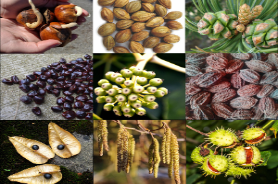


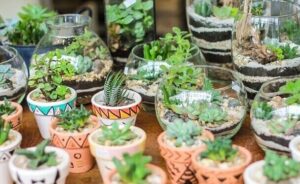


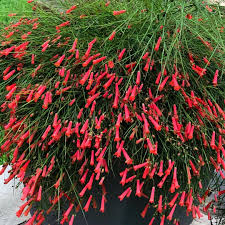
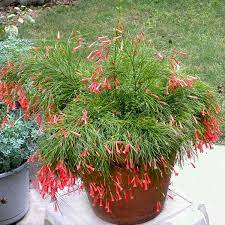


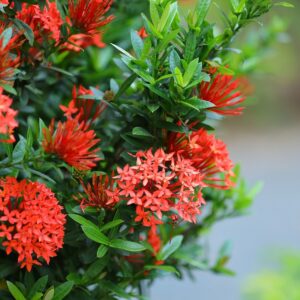
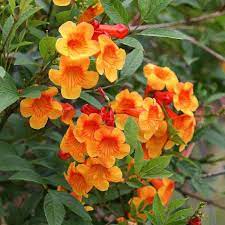
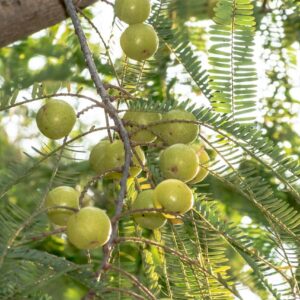
Reviews
There are no reviews yet.